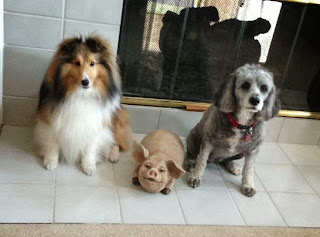What should you do at this point? Ignore it? Put down your popcorn and run to the veterinary emergency clinic? Neither.
Lumps can develop in and on pets, just like they do in their human counterparts. There are many different types of lumps, bumps or masses that develop in dogs and cats at all stages of life. The most important thing to do when you discover a lump on your pet is to take note of it. Try to remember where it is and how large it feels when you first notice it. Write it down to be sure that you don't forget about it. If there are more than one, count them and take notice of the location and whether or not they are changing.
Now, step two is to take your pet into your favorite veterinarian for a visit. You don't need to rush, but don't waste time either. You need to get this lump checked out. Don't ever ignore the lump and hope that it will go away. It may be something harmless or it could be something serious; you may need to act fast. Either way it is best to know the proper course of action and your veterinarian is trained to help you make this decision.
Your veterinarian will ask you some questions about the lump and palpate it. Your veterinarian will then recommend a fine needle aspirate. This test is simple to do with your dog awake and will require only a short amount of time to perform. The veterinarian will insert a small needle into the lump to extract some cells. The cells will then be transferred to a microscope slide and stained. Once the cells are stained, your veterinarian will be able to look at them under a microscope and tell you whether this lump is benign, or is something more sinister.
The needle aspirate will not always be completely diagnostic, but it can often give your veterinarian an idea whether the mass needs to be watched or if further testing needs to be done to determine a diagnosis. Often times if the needle aspirate looks suspicious your veterinarian will advise you to have the mass removed surgically and biopsied. Surgery is often the recommendation to remove and cure a cancer before it can spread to other parts of the body and cause more severe disease.
So, eat your popcorn and pet your dog (not with the same hand) and call your veterinarian when you feel a lump.
